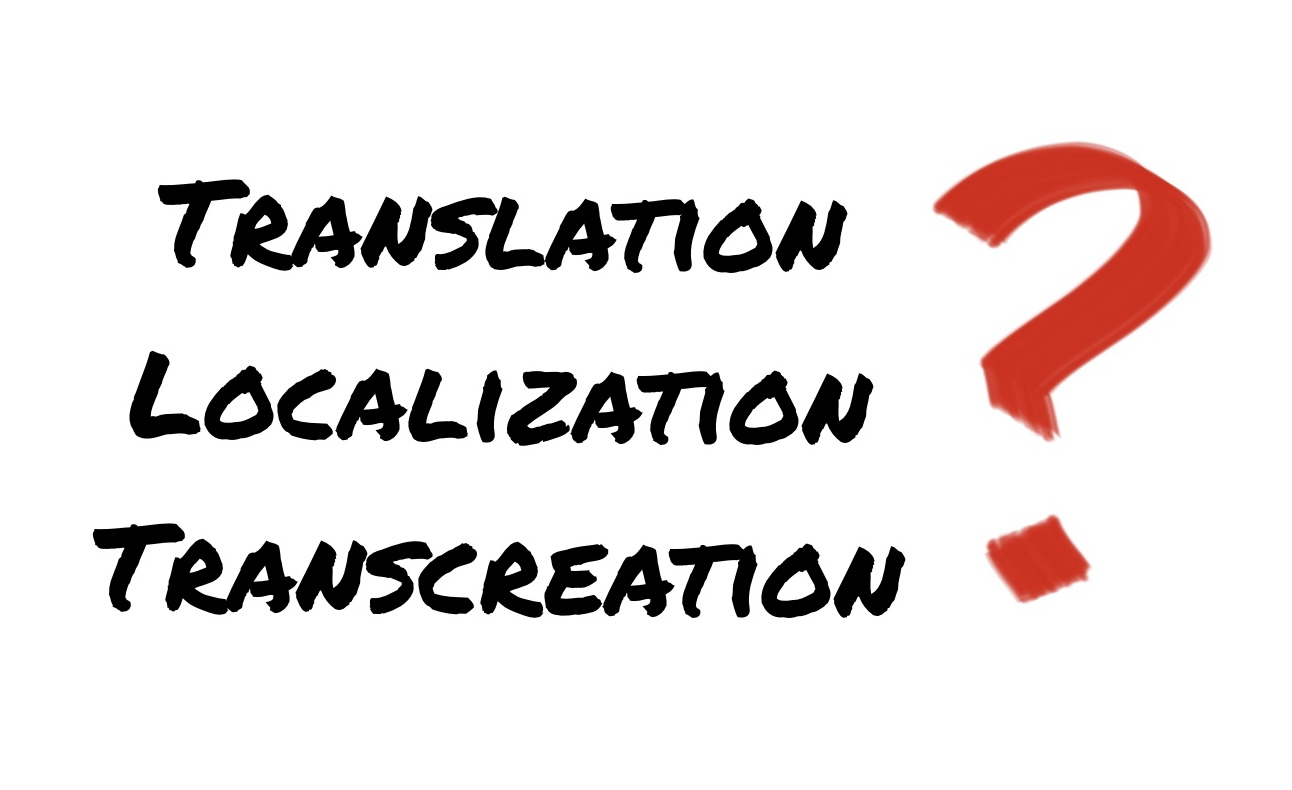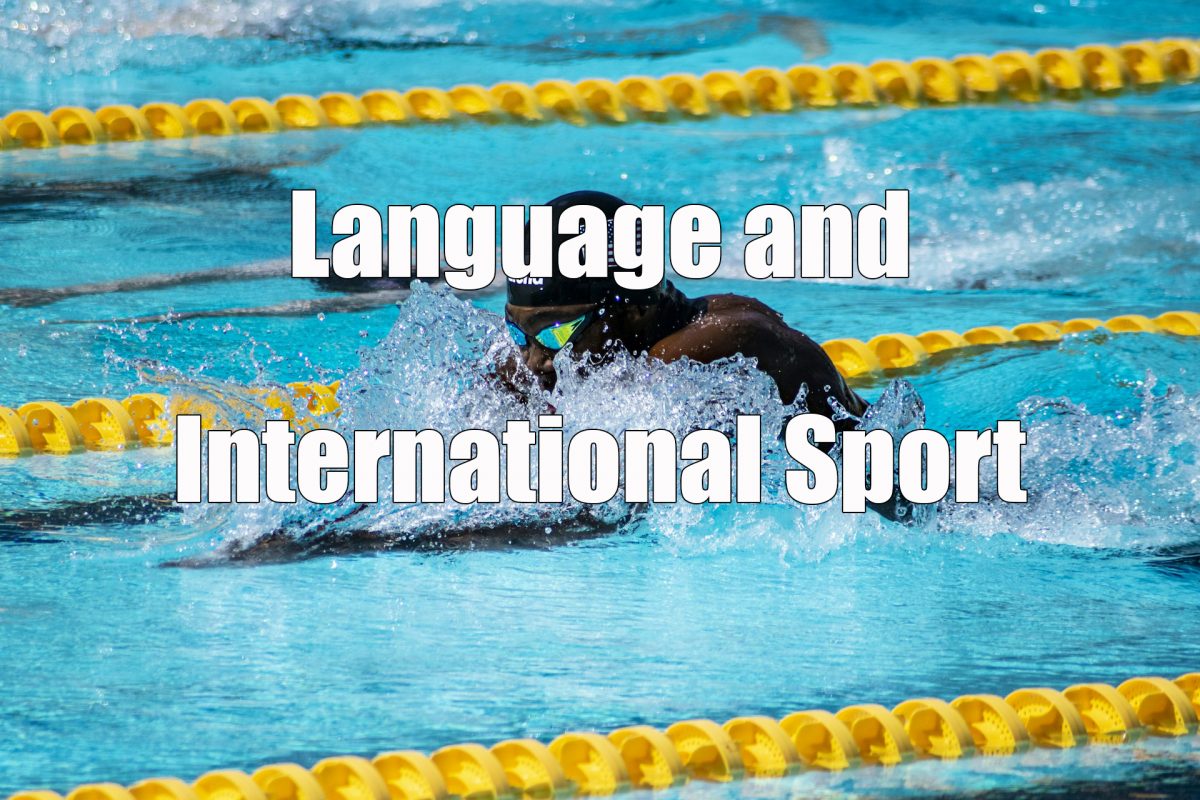
As markets become more global, companies that have dealt mainly within their national borders are increasingly forced to adopt a more international perspective. And that often involves providing instruction manuals and sales promotional materials in different languages. But what’s the process involved? Is it translation, localization or transcreation? You may feel uncertain, and for good reason. There are no universal standards, and the definitions for each may differ depending on who you ask. So read on, and let us give you a few tips.
Contents
Yes, standards exist but…
When we say “no universal standards,” we don’t mean the translation industry is an unregulated hot mess. Just as the manufacturing industry deals with many standards including the ISO 9000 series by the International Organization for Standardization, the translation industry follows ISO 17100:2015 to facilitate “quality management.”
There are also other country/region/language-specific standards including the Italian UNI 10574, the German DIN 2345, the Austrian Önorm D 1200 and Önorm D 1201, the Canadian CAN CGSB 131.10, as well as the American standard ASTM F2575-06. Although their scope and focus may differ somewhat, those standards basically set out to identify the items that translation providers and customers should agree upon prior to starting a project, and define basic requirements for providers such as resources and their roles. The goal is, as stated earlier, quality management.
So, in the case of these standards, what does “quality management” mean? To put it as simply as possible, it’s to make sure that translations are correct and on time. What it doesn’t mean is to deliver translations that will wow the reader, amaze the audience or convince the critics. That is beyond the scope of translation standards. Correctness is objectively quantifiable whereas “good” or “bad” tends to be more subjective and difficult to standardize.
So do you need “translation” or something else?
“Translation” is the generic term you’ll find in the dictionary as “the rendering of something into another language or into one’s own from another language.” So, it’s kind of a blanket term that covers the entire spectrum, but can also refer to a straight translation that maintains a strong relationship between words and phrases in the source text (ST) and the target text (TT). This is different from “localization,” which is translation that takes into consideration the preferences and sensibilities of the target audience – like using local currency units, date formats and the metric system, just to name a few. Then there’s something else called “transcreation” that we’ll talk about later. But as a customer, what should you be looking for?
Ask yourself this simple question: Do you want the text to explain something, or to express something? That’s your starting point.
If you want a translated text to explain something (usually because the source text is also explaining something), you could go with a straight translation, or better yet, opt for locale-sensitive localization. These are great for, say, instruction manuals where it’s preferable to have a 1-to-1 correlation between words and phrases of your source and target languages for the sake of consistency and continuity (especially when Translation Memory is involved, but more about that later). Correctness is the key in this area.
But if you want a translated text to express something, to sell a product or even an idea, you should be aiming for at least localization, and preferably something we in the industry call “transcreation.” A successfully transcreated message will evoke the same emotions and impact in the target language as it does in the source language. It will read naturally, and be devoid of any tell-tale signs of originating from another language. The 1-to-1 word or phrase correlation between source and target takes a back seat in favor of optimized messaging.
The nuts and bolts of translation/localization and transcreation are different
Although “translation” goes back ages – ever since the need to communicate between two languages first arose – the translation/localization industry is being constantly renewed with the advent of digital technology. On the translation management side, Project Managers (PMs) use digital tools to control the entire translation/localization workflow. Some projects will rely on Translation Memories (TMs) to ensure consistency and reduce Turnaround Time (TaT), while others might use a combination of Machine Translation (MT) and Post-editing (PE) by a human to put out a steady flow of localized content at breakneck speed. Today’s fast-paced global markets have made it necessary to automate the process as much as possible, and tech is an essential part of any large-scale LSP (Language Service Provider) portfolio.
By comparison, although “transcreation” is a relative newcomer that grew along with the global marketing and advertising fields in the early 21st century, ironically it’s reliant on not-so-new factors like a translator’s skills as a writer, including creativity, which cannot be made up through digital automation. Transcreation is a more time-consuming and labor-intensive craft, but a successfully transcreated piece is able to elicit an emotional response from the audience in a way that no normal translation can.
Don’t try to fit a square peg in a round hole
Granted there may be large projects that require a mix of translation, localization and transcreation work. Some texts may be meant for explaining, like press this, do that, then this happens. Some texts might want to inspire and get readers to imagine how their lives might change by using this product or that service. What you might want to keep in mind is not to mix everything into the same workflow, or at least not to dismiss outright when an LSP suggests tweaking the workflow to accommodate this difference.
Take the CAT (Computer-Assisted Translation) tools that are commonly used in the translation industry. They use TM (Translation Memory), a database that stores “segments” of translation data that are typically short, like titles or sentences. Segmenting by paragraph is also possible, but from a translation engineering perspective this doesn’t make sense unless it’s a boilerplate paragraph that is used repeatedly. Sentence-based or shorter segments are much more likely to produce exact or near-exact matches in the language pair to speed up the translation process.
But short segmenting creates a major headache for tasks requiring transcreation. That’s because transcreation may require an existing sentence to be split up, two sentences to be fused into one, or maybe even an all-around restructuring of the entire text flow. Facts that come as second nature in one country may need some supporting information in another. The source text can be nuanced, filled with colloquialisms and word play that do not translate well into the target language. The concept of TM is based on the premise that sentences used in previous translations can be recycled, but the core principle of transcreation is that the translator must translate the message of the text and not its component sentences. As a result, the transcreation process may even involve using the source text only as a reference while the target copy is written from scratch – which absolutely flies in the face of TM.
The challenge for LSPs and customers alike
Very few customers understand the differences between translation, localization and transcreation. Most have never even heard of the word “transcreation.” So naturally it becomes a challenge for an LSP to convey the importance of choosing the one or combination thereof that’s the best fit for a specific project. “Transcreation” can’t be found in a dictionary, nor is it clearly defined in any industry-wide standards, so it boils down to whether an LSP can clearly communicate its necessity and advantages to the customer. And since transcreation is the most labor-intensive and time-consuming type of translation, the cost factor cannot be ignored.
At Crestec, an account executive will discuss with the customer why their request requires transcreation and what that service entails. Typically, transcreation is billed at a higher rate than translation/localization and is charged by man-hours. When work is complete, Crestec meets with the client to go over the final product together and get final approval for delivery. In the case of Japanese clients localizing into English, we often describe transcreation to the client as “a commercial-like translation” (a short-hand way of saying “a translation with the impact necessary to sell”), followed by a description of how the work differs from that of localization.
When you need messaging that’s just as powerful and relevant in foreign markets as they are at home, opting for anything less than transcreation jeopardizes your chances for success. But on the flip side, transcreating copious amounts of rapidly updated content might not be the best use of time nor money. Translation, localization and transcreation are all useful, relevant and important. Success comes from knowing what to apply where.
The challenge for translation providers is in presenting the difference in a way that the customer can understand, including the pros and cons of each. The challenge for customers is to think beyond cost as the sole factor in decision-making, and to consider the true return on investment.
Straightforward Translation
Pros |
Cons |
•Easiest for a non-native to check target text against source text •Easy to maintain TM •Lower cost •Good at explaining |
•Unnatural sentence structure and other elements •Loss of messaging impact •Not good at expressing ideas |
Localization
Pros |
Cons |
•Easy for non-native to check •Easy to maintain TM •Lower cost •Better at explaining with cultural adaptation •Faster than transcreation |
•Takes slightly more time than straight translation |
Transcreation
Pros |
Cons |
•Best at expressing ideas and concepts •Elicits an emotional response •No loss of messaging impact •Stress-free native reading •Improves corporate/brand image |
•Difficult for non-native to check •Limited advantages of TM •Higher cost •Takes more time |
Douglass McGowan






